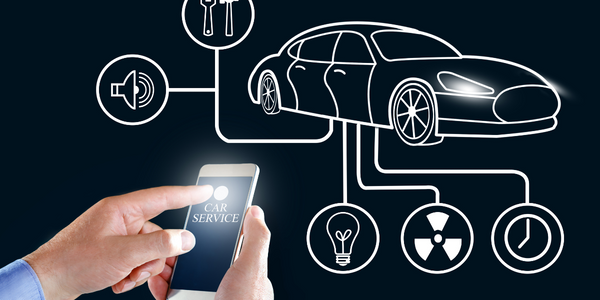Customer Company Size
Mid-size Company
Region
- Europe
Country
- Italy
Product
- Forcepoint Web Security
- Forcepoint DLP
Tech Stack
- TRITON Architecture
Implementation Scale
- Enterprise-wide Deployment
Impact Metrics
- Cost Savings
- Productivity Improvements
Technology Category
- Cybersecurity & Privacy - Cloud Security
Applicable Functions
- Discrete Manufacturing
- Product Research & Development
Use Cases
- Cybersecurity
Services
- System Integration
About The Customer
IMI Remosa is a leading manufacturer of control systems with solid industrial service experience. The company works with refineries, petrochemical industries, power plants, mining and manufacturing industries, and metal working industries, where it operates as a service provider for mechanical precision products and industrial maintenance. IMI Remosa’s main products are valves, actuators, and electrohydraulic control units, all of which are designed and built entirely in-house. IMI Remosa’s clients include oil refining companies and plants around the world. In 2012, IMI Remosa joined the group IMI Plc, a British multinational leader in the industrial engineering market, integrating its core business into a notably more complex and structured enterprise. IMI Plc employs more than 12,000 people and has production plants in more than 20 countries with annual revenue of approximately £1.7 billion.
The Challenge
IMI Remosa, a leading manufacturer of control systems, faced a significant challenge in protecting its proprietary information. As the company continued to grow and innovate, the volume and accessibility of sensitive data increased, making the company increasingly vulnerable to data leakage and theft. The company's transition to a multinational organization accelerated the need for a security solution that could prevent data leakage and theft while ensuring safe and regular access to sensitive information. The IT organization was tasked with protecting the company's intellectual property and defining user roles and access privileges. To ensure the security and control the flow of sensitive information within the network, a security solution that provides both comprehensive Data Theft Prevention and detailed analytic reports was necessary.
The Solution
After researching the data security market, IMI Remosa chose Forcepoint Web and Data Security solutions, trusting that the combination would more than meet their need to manage web and data security risks. The adoption of Forcepoint has delivered significant security advantages to IMI Remosa in terms of cost and effectiveness. The web and data solution was also very helpful in modifying end-user behavior, preventing data and sensitive information leaks that are typically related to user error. This has led to a substantially higher level of internal data security and confidentiality. TRITON Architecture’s enhanced reporting capabilities deliver more granular control over data security with statistical detail that was not previously possible. This has enabled IMI Remosa’s IT service quality to improve.
Operational Impact

Case Study missing?
Start adding your own!
Register with your work email and create a new case study profile for your business.
Related Case Studies.

Case Study
Enel Secures Italian Power Generation Network
Electric energy operators around the world are working to increase the reliability and cyber resiliency of their systems. This includes Enel, a global power company that manages and monitors the Italian power grid. This grid:• Serves 31 million customers• Has a net installed energy capacity exceeding 31 gigawatts• Includes more than 500 power generation plants,including hydroelectric, thermoelectric, and wind• Is managed and monitored by Enel 24/7/365• Is operated by Terna, the Italian Transmission System Operator (TSO)Enel is responsible for the availability of the grid’s underlying ICS and industrial network. It also manages Regional Control Centers and Interconnection Centers which connect with the TSO. The TSO manages the flow of energy to the grid plus controls and remotely regulates the power generation of power plants, increasing and decreasing power production as required. The complex system of interaction and cooperation between Enel and the TSO has strong security implications as well as operational and business challenges.

Case Study
Securing the Connected Car Ecosystem
In-vehicle communications and entertainment system hosts high-value or sensitive applications. API libraries facilitate communication and sharing of vehicle data. These API libraries are vulnerable to reverse engineering and tampering attacks and may even result in loss of passenger safety. Attackers can inject malware that may be able to migrate to other in-car networks such as the controller-area-network (CAN) bus which links to the vehicle’s critical systems. Software provided for dealers to interface with cars through the OBD2 port is vulnerable to reverse engineering and tampering attacks. Hackers may be able to abuse these tools to inject malicious code into the ECUs and CAN bus. Attackers can lift the cryptographic keys used, and use that to build their own rogue apps/software. Their cloned version of the original app/software may have altered functionality, and may intend to gain access to other in-car networks.

Case Study
Secure and Cloud-based Data Marketplace
The great promise of new connected concepts of industry like 'Industry 4.0' is their ability to deliver a historically unparalleled level of responsiveness and flexibility. While modern supply chains are already heavily integrated and designed to be fluid and fast moving, a large swathe of manufacturing still remains beholden to economies of scale, large production runs, and careful preplanning.The Industrial Internet of Things (IIoT) is set to change this by allowing small-batch or even custom manufacturing on a truly industrial scale. With machines whose functions are not set in stone, but flexible and determined by their operating software and with a new form of connectivity bringing industrial engineers, product manufacturers, and end users closer together than ever before. Ad-hoc adjustments to automotive parts, for example, during active product runs or the bespoke manufacturing of custom sneakers become very viable options indeed.Much of this remains a theoretical vision, but IUNO, the German national reference project for IT security in Industry 4.0 demonstrates the new capabilities in action with a secure technology data marketplace running a smart drinks mixer.

Case Study
Expedia Hosted by 2lemetry Through AWS
Expedia is committed to continuous innovation, technology, and platform improvements to create a great experience for its customers. The Expedia Worldwide Engineering (EWE) organization supports all websites under the Expedia brand. Expedia began using Amazon Web Services (AWS) in 2010 to launch Expedia Suggest Service (ESS), a typeahead suggestion service that helps customers enter travel, search, and location information correctly. According to the company’s metrics, an error page is the main reason for site abandonment. Expedia wanted global users to find what they were looking for quickly and without errors. At the time, Expedia operated all its services from data centers in Chandler, AZ. The engineering team realized that they had to run ESS in locations physically close to customers to enable a quick and responsive service with minimal network latency.
.png)
Case Study
OTA Software Updates for Smart Energy (gridX)
gridX has a requirement for over-the-air software updates for their gridBox devices and used the Yocto Project for their builds. The driver for the requirement was having the ability to quickly support new features, as well as deploying bug fixed and path known security vulnerabilities. New software updates with a US stick manually to all gridBox devices in the field would be prohibitively expensive and labor-intensive.

Case Study
Transformed IT Infrastructure Improves Business Agility
A global security, storage, and systems management software provider planned to demerge into two separate companies. To prepare, it undertook a major overhaul of its IT infrastructure and operations strategy. A key requirement: streamlining the Hosting Group, which handled compute, storage, and middleware operations. These functions had grown complex and had a wide geographic distribution. The company planned to bring them under closer in-house management.The company looked to increase its business agility so it could quickly and creatively respond to customer demands with improved internal collaboration and optimized go-to- market and IT service delivery capabilities. Modernizing IT functions, and making them more responsive, was critical to achieving these goals.







